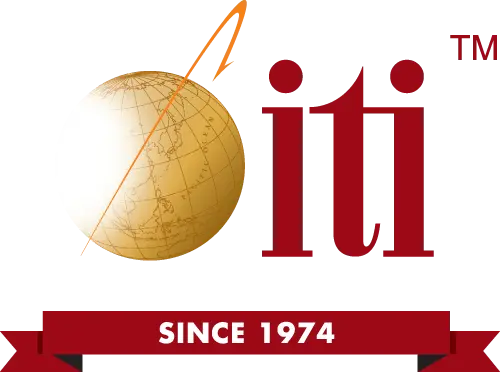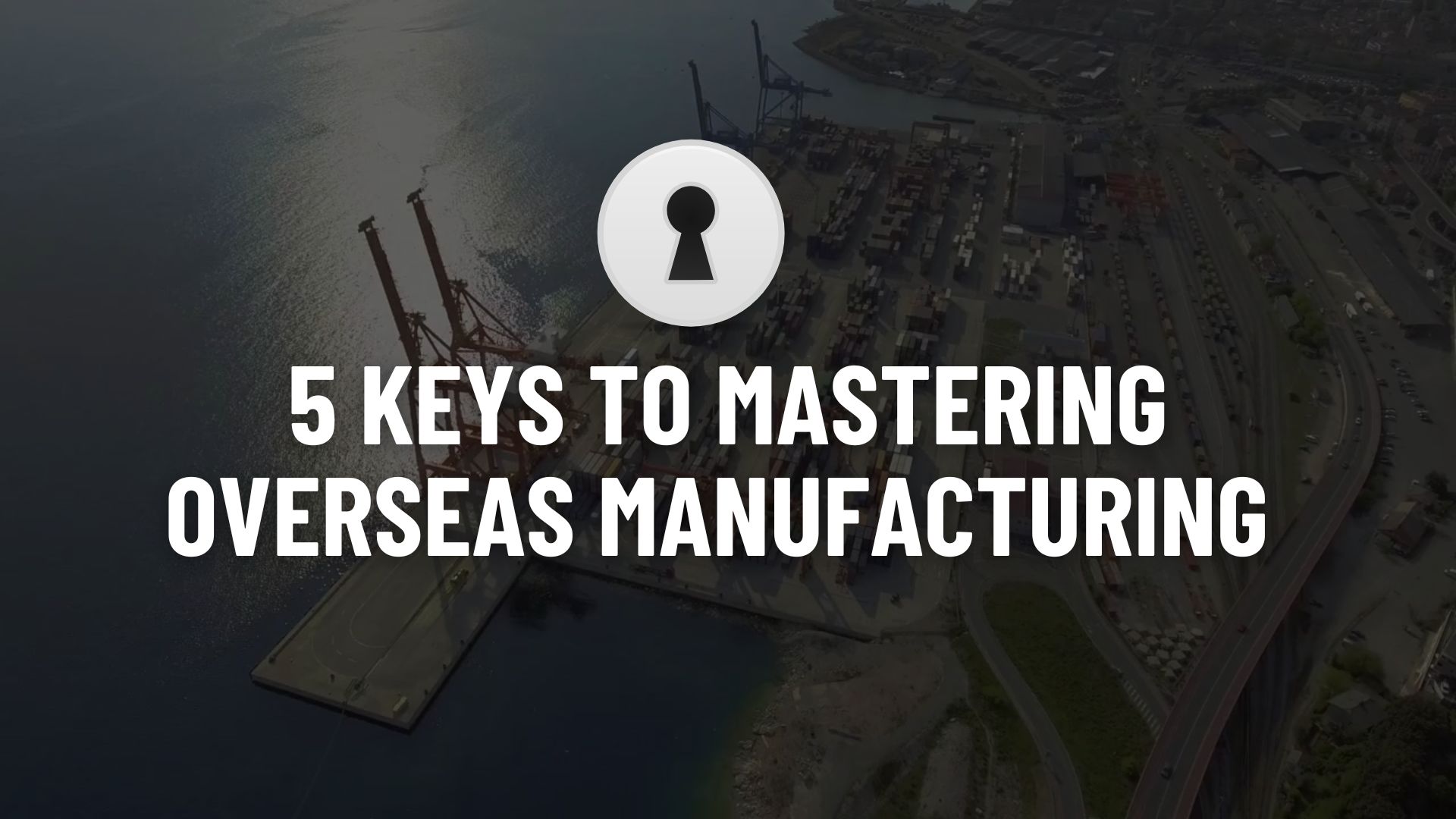
Manufacturer Supply Chain Management Tips: KPIs to Track
The pressure to ensure your entire supply chain delivers as it should is overwhelming. With the sheer scale and number of players involved, there is no way you can be everywhere all of the time to assure perfection. The closest we can get is indirect monitoring of the supply chain’s strength by using carefully crafted key performance indicators, or KPIs.
Imagine a figurative export supply chain for a moment: A manufacturer overseas puts local raw resources and labor to work producing a product shipped across the globe to a foreign market. The product then travels through a distribution chain before finally reaching end users. Across all this activity, there could be a dozen or more major steps, on top of hundreds of minor steps like:
- Material sourcing.
- Inventory balancing.
- Logistics.
- Coordination.
- Quality control.
- Warehousing.
- Cost management.
All this activity is set into motion for a single product, often by a single originating transaction.
As an industrial buyer, you might have been the person who issued that originating transaction, and it could be one of many orders that you have open concurrently. The success of your business hinges on these orders, as the parts are required to fulfill the commitments you’ve made to your customers.
For your own peace of mind, you need to track your supply chains using KPIs. Actively monitoring and managing industrial supply chain strength serves two purposes:
- Mitigating risk: A business reliant on external parties across a supply chain is inherently exposed to risk on countless fronts. Even seemingly isolated events such as raw material shipping delays, labor inefficiencies and fuel price increases can all come to bear substantial impact on the purchaser’s business in the future.
Large or small, any potentially disruptive conditions must be caught and addressed as soon as possible in order to mitigate risk. KPIs are a very useful tool for monitoring such conditions, serving as a proverbial canary in the coal mine of supply chain integrity.
- Predicting opportunity: In the same way that upstream conditions can eventually have massive negative impacts across a supply chain, certain beneficial scenarios can have extremely positive impacts as well. Labor surpluses, material cost drops and manufacturing consolidation are just a few factors in upstream manufacturing that can signal developing commercial opportunities.
When properly set up and calibrated, KPIs can catch precursors to such opportunities, alerting buyers with enough time to capitalize.
Putting the Key in Key Performance Indicators
There are plenty of articles online that provide deep dives into supply chain key performance indicators, how to model them with equations and what data to leverage in their measurement. What’s broadly missing from the conversation though, in our opinion, is how these KPIs can be interpreted and then used to enact real business improvement.
In a question, what makes KPIs key?
To answer this question, we’ll introduce our novel perspective on framing performance indicators in terms of what they actually indicate about a business: operational health, commercial risk and competitive advantage.
Let’s break each of these concepts down.
Metrics That Indicate Operational Health
In plain English, what does a healthy manufacturer supply chain look like? It should be:
- Productive.
- Consistent.
- Reliable.
- Durable in the face of upsets.
- Profitable for all parties involved.
None of these attributes can be reasonably represented with a single KPI value, in fact. Likewise, no two businesses will define their health the same using single KPIs. Instead, we can coagulate KPIs together that infer health and analyze them in aggregate.
For example, if a manufacturer supply chain measures KPIs high in on-time delivery, low in reported order issues, high on asset utilization and fairly balanced on accounting cashflows (erring towards profitability), then altogether we’d call this a healthy operation.
Metrics That Indicate Commercial Risk
By definition, manufacturing schemes always come along with some level of inherent risk. When dealing with export manufacturers overseas (or even with some domestic manufacturers), visibility into these businesses may be quite limited.
For example, KPIs that can catch declining days of supply, increasing lead times, decreasing on-time shipping rates and certainly declining financial performance should be closely monitored and interpreted for overall risk potential.
Metrics That Indicate Competitive Advantage
Too often we find businesses with clear competitive advantage to be oblivious to the fact simply because it occurs in a part of their organization where they didn’t think to look. Companies tend to focus on the obvious candidates: order completion time, price margin, total inventory volume and in-full order rate. That said, competitive advantage could just as easily be hidden in more mundane KPIs as well.
For example, business features such as quick logistics times, low labor demands, low reject rates and redundant supply chain nodes can all be viewed as competitive advantages that can lead to wider business opportunities. KPIs that catch such positive conditions as they develop can be used strategically, alerting management and sales channels of opportunities as they’re created.
Managing Manufacturer Supply Chain Integrity Using KPIs
Managing an industrial, international supply chain takes equal parts technical analysis and astute intuition. Using advanced technological solutions and lots of data, key performance indicators can help build a more complete picture of how a supply chain is behaving at a point in time, as well as statistically model its future performance. However, the real insight needed to make sound managerial decisions cannot be found in individual metrics, but instead in their aggregate meaning. To showcase this concept, let’s run through an example scenario using real life conditions from our past projects.
Commercial Risk: Resource Bottlenecks
For a domestic buyer purchasing printed circuit boards from an overseas supplier, several KPIs were tracked specifically looking for atypical signs of bottlenecks. Should a bottleneck occur, our client would have been at risk of inventory depletion, customer attrition and great financial loss.
The KPIs measured included:
- Total capacity utilization: Looking at how much production capacity was being consumed versus how much unused capacity was available, the manufacturer’s utilization gradually approached and then exceeded 100 percent. This indicated that the manufacturer’s production was spilling over into premium time, unplanned shifts.
- Mean time to produce: Measuring the time from when the buyer’s order was placed to when production began, the manufacturer’s backlog was driving this time from the usual 12 days to over 30 days, indicating problems getting orders through production.
- Mean time to ship: This KPI measures the time from order to shipment. When compared to the mean time to produce KPI, it was discovered that the manufacturer was not only falling behind in production turn-around, but was holding onto finished product longer before shipping out as well.
Thanks to great visibility into the third-party’s manufacturer supply chain, these early trouble signs were detected that altogether signaled a pending bottleneck getting product through this manufacturer’s plant. In response, secondary standby resources were activated, and our client completely and proactively sidestepped the impending bottleneck.
Experts in Manufacturer Supply Chain Management
Overall, individual KPIs are fantastic in normal, day-to-day management of operational efficiency. Even better, when KPIs are combined into compound models and weighted against each other, they become significantly more useful in managing commercial risk and identifying emergent opportunities. In this way, buyers can get as close as possible to being everywhere, all at once, keeping tabs on the health and resilience of their entire supply chain.
If you’d like to learn more about manufacturer supply chain KPIs and how we can help streamline your production, contact us.







